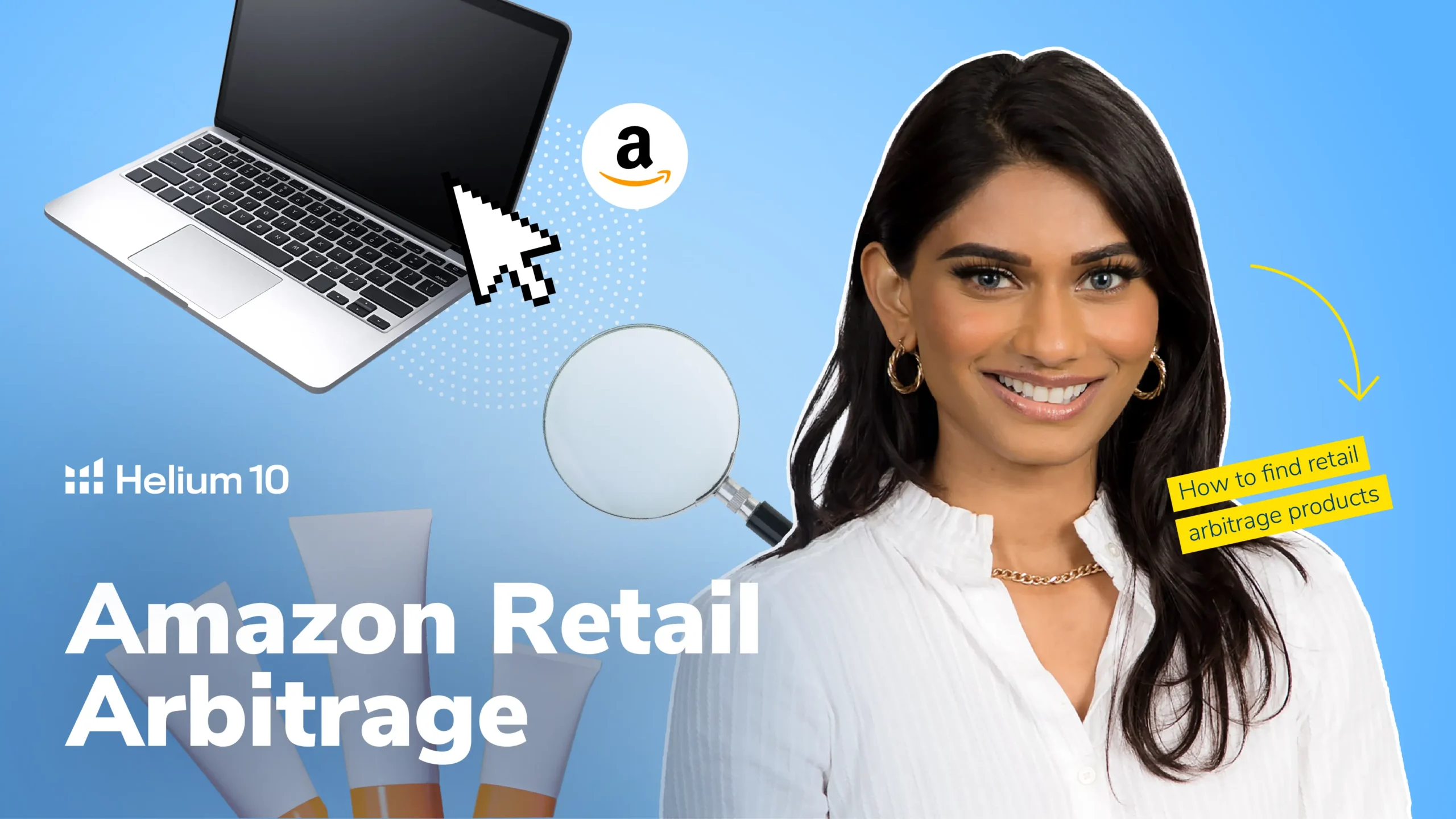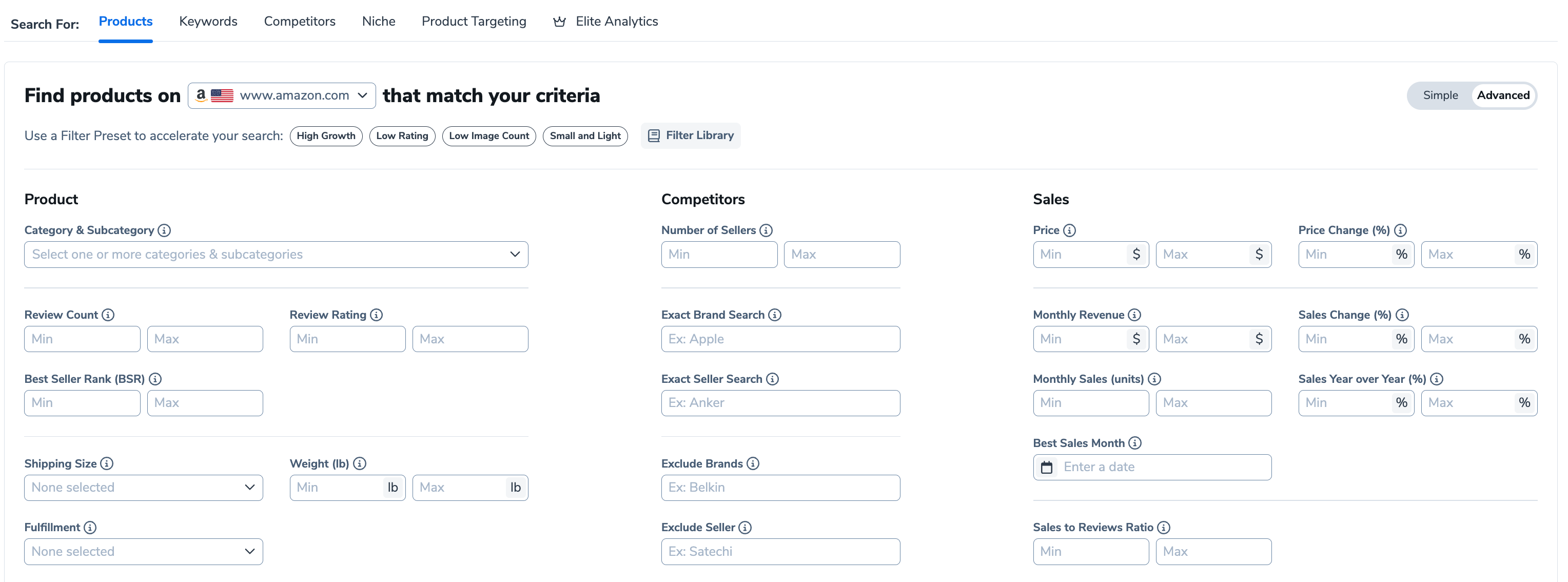
Amazon Retail Arbitrage: Unleash Your Earning Potential on Amazon


Table of Contents
- Introduction
- What Is Retail Arbitrage and How Does It Work?
- What Is an Example of Retail Arbitrage?
- Is Retail Arbitrage Legal?
- Is Retail Arbitrage Allowed on Amazon?
- What Are the Risks of Retail Arbitrage?
- Can I Start Retail Arbitrage With No Money?
- Is Retail Arbitrage Profitable?
- How Much Can I Feasibly Make From Retail Arbitrage?
- Is Retail Arbitrage Easy?
- Is Amazon Retail Arbitrage Worth It?
- What Are the Best Categories and Items for Retail Arbitrage?
- What Is Retail Arbitrage Sourcing?
- How to Find Retail Arbitrage Products
- How to Do Retail Arbitrage Through Amazon FBA
- Conclusion
Introduction
Welcome to the world of retail arbitrage, where entrepreneurial spirit meets smart sourcing strategies to create a profitable business on Amazon. If you’re looking to unleash your earning potential on Amazon, retail arbitrage can be an exciting and profitable venture. In this blog post, we will dive deep into the world of retail arbitrage, exploring its intricacies, how it works, the risks involved, the potential rewards it offers to savvy sellers, and all of your burning questions.
We’ll cover the ins and outs of retail arbitrage, from finding the best categories and items to sourcing strategies and the overall profitability of this business model. So, get ready to explore the exciting world of Amazon Retail Arbitrage and discover how you can unleash your earning potential on Amazon!

Outclass Your Competitors
Achieve More Results in Less Time
Maximize your results and drive success faster with Helium 10’s full suite of Amazon and Walmart solutions.
Sign Up for FreeWhat Is Retail Arbitrage and How Does It Work?
Retail arbitrage is a popular and profitable selling strategy used by Amazon sellers to leverage price discrepancies between a retail store and the Amazon marketplace. In simple terms, it involves buying products at a lower price point from physical stores and then reselling them at a higher price on Amazon thereby earning a profit.
To recap the selling process, an astute retail arbitrageur would visit brick-and-mortar retail stores, such as local discount stores, clearance sections, or thrift shops armed with a sharp eye for deals. Analyzing sales ranks and price histories on Amazon helps identify products with high demand and a considerable price difference between their retail and Amazon prices. And after purchasing the product of interest in bulk from retail stores, they would list them on Amazon to begin selling online for a premium.
Trust that retail arbitrage can be a lucrative venture, especially when sellers possess a keen eye for spotting profitable deals and understand market demand on Amazon. However, it also requires careful consideration of factors like Amazon’s selling fees, storage fees, competition, efficient inventory management, and excellent customer service after you are up and running to ensure a successful and sustainable retail arbitrage business on Amazon.

What Is an Example of Retail Arbitrage?
Let’s say you come across the popular children’s toy “XtremeRace Car” that normally sells for $40, but it’s marked down to just $25 due to a clearance sale. Recognizing its potential demand on Amazon, you check its listing on the platform and discover that the current selling price of the same toy is $45.
Recognizing this opportunity, you decide to purchase ten units of the toy at a discounted price from the retail store. You then create a product listing to sell on Amazon, offering it at a competitive price, say $43. When customers search for this toy on Amazon, they find your listing and buy it because your price is lower than other sellers.
After covering Amazon’s fees and shipping costs, each toy ends up costing approximately $30. You as the seller earn a profit of $10 per unit.
When orders are placed, you ship the toy to the customer, and Amazon handles the fulfillment process.
While retail arbitrage offers exciting profit potential, just be mindful of the gaps between markup costs and the fees incurred when selling on Amazon. Amazon charges various fees, including referral fees, fulfillment fees, and storage fees for products held in Amazon’s warehouses. Understanding these costs will help you determine your actual profit margin per product and it is through striking the right balance between competitive pricing and profitable markup that will allow you to have a sustainable business model. sellers can maximize their earnings through retail arbitrage on Amazon by scaling this strategy and repeating the process with different products.
Is Retail Arbitrage Legal?
Rest assured, yes, retail arbitrage is legal. The practice of arbitrage falls within the bounds of the “first sale doctrine,” which allows individuals to resell legally purchased products without infringing on copyright or trademark laws. The products sourced for resale must be genuine and not counterfeit or prohibited items.
It is crucial sellers are aware of and understand certain restrictions and guidelines set by retail stores or brands regarding the resale of their products. Some retailers may have specific policies on purchasing items for resale, and sellers should respect those rules to maintain a positive and ethical business approach. You should check the terms and conditions of the retail stores you are buying from whenever possible.
Additionally, sellers are responsible for complying with local laws and regulations, including sales tax and business licensing requirements.
By adhering to legal and ethical practices, sellers can confidently engage in retail arbitrage to unleash their earning potential on Amazon and other e-commerce platforms.
Is Retail Arbitrage Allowed on Amazon?
Absolutely! Amazon welcomes retail arbitrage sellers on its platform. The retail arbitrage model enriches the product diversity available to Amazon customers, and the marketplace values the entrepreneurial spirit of sellers who provide unique products sourced from different channels
However, it’s crucial for sellers engaged in retail arbitrage to adhere to Amazon’s policies and guidelines to ensure a smooth and compliant selling experience. As stated above, sellers should avoid listing counterfeit or used items as new, and they must accurately represent the condition and authenticity of the products they are selling.
Additionally, sellers should be aware of potential intellectual property issues and refrain from listing branded products without proper authorization from the brand owners. Violating Amazon’s policies can result in account suspension or other penalties, so sellers must maintain transparency and follow Amazon’s rules. By adhering to Amazon’s guidelines and maintaining high-quality standards, you as a seller can flourish in the highly competitive Amazon ecosystem.
What Are the Risks of Retail Arbitrage?
As with any business venture, retail arbitrage comes with inherent risks. Increased competition, the possibility of restricted or gated product categories, intellectual property issues, market fluctuations, and changes in demand are a few factors that can impact profitability.
As more sellers engage in retail arbitrage, the market can become saturated with similar products, leading to price wars and reduced profit margins. Niche demands can quickly change before you have liquidated your stock and can be reflected in fluctuating prices from retail stores or changes in Amazon’s fees and policies ultimately impacting profitability.
Amazon may also suddenly restrict certain brands or products for retail arbitrage sellers, requiring them to obtain approval or authorization to sell those items. This can limit sellers’ opportunities, costing you significant time on top of the time you have already spent to source, list, store, and manage that inventory. Carefully assess the cost of your time and resources to ensure that there is a return on investment that justifies the effort.
Selling branded items without proper authorization can lead to legal consequences or account suspension due to trademark or copyright violations so though there is money to be made, you will want to keep your wits about you as you partake in retail or perhaps Amazon online arbitrage.
At any given time, relying too heavily on a single product or failing to adapt to market shifts may expose your business to unforeseen challenges. We encourage you to mitigate these risks by diversifying their product offerings and continually monitoring market trends.
Can I Start Retail Arbitrage With No Money?
Starting retail arbitrage with absolutely no money can be challenging but not entirely impossible. While it’s true that traditional retail arbitrage involves purchasing products from physical stores, there are alternative methods, to begin with minimal capital. One approach is to explore online platforms or local sources that offer free items or heavily discounted products.
Freecycle and other online classified platforms can be valuable resources for finding free items that you can potentially sell on Amazon. You can always look for clearance sales, thrift stores, garage sales, or even ask friends and family for unwanted items that you can list for sale if you feel you are out of options.
Alternatively, you could turn to dropship, where you list products for sale on Amazon without holding inventory yourself. When a customer makes a purchase, you buy the item from a third-party supplier who ships it directly to the customer. However, dropshipping also comes with its own set of challenges, such as the potential for shipping costs, delays, and maintaining accurate inventory data. You can learn more about the pros and cons of dropshipping through an old blog on a case study Bradley did here at Helium 10.
While it’s feasible to start retail arbitrage with little to no money, it’s essential to remember that scaling and sustaining the business may require some initial investment. As profits accumulate, reinvesting in inventory and diversifying sourcing strategies can significantly enhance your earning potential on Amazon.
Manage Everything With Next-Level Software
Sign up now to access powerful, easy-to-use tools to help with every part of selling on Amazon and Walmart.
Is Retail Arbitrage Profitable?
I think if you have read this far into the article or have done a bit of research, you already know retail arbitrage can be a profitable venture if executed strategically and with careful consideration. The profitability of retail arbitrage largely depends on several factors, including your ability to find high-demand products at discounted prices, effective pricing strategies, and efficient listing optimization on Amazon.
Managing operational costs, such as shipping fees, storage fees, and Amazon seller fees, will also be crucial to calculating your actual profits accurately. Regularly analyzing the performance of your competitor’s inventory levels by using tools like our Chrome Extension and adjusting your sourcing strategies based on sales trends will help you make the most out of your arbitrage journey online.
How Much Can I Feasibly Make From Retail Arbitrage?
As a retail arbitrage seller, you can make anywhere from a few hundred to several thousand dollars per month. Some experienced sellers have reported monthly profits in the five-figure range. However, it’s crucial to understand that success in retail arbitrage is not guaranteed, and it requires consistent effort, research, and adaptability to market trends.
While some sellers have achieved impressive profits through retail arbitrage, it’s essential to approach the concept of your potential earnings with realistic expectations and a solid business plan to achieve them before considering how to scale up.
To keep the best odds of having impressive returns on your investment, focus on identifying high-demand products with a reasonable profit margin and low competition keeping in mind everything we have discussed so far. Amazon’s marketplace is dynamic, and product prices can fluctuate, so ensure you are monitoring your listings regularly and adjusting your strategies accordingly.

Is Retail Arbitrage Easy?
Retail arbitrage on Amazon can be both rewarding and challenging, and its level of difficulty varies from one seller to another. While the concept of buying products at a lower price and selling them at a higher price seems straightforward, the actual execution involves several complexities.
The ease of retail arbitrage depends on factors such as your sourcing skills, knowledge of profitable niches, ability to identify in-demand products and understanding of Amazon’s seller policies. Sourcing profitable products can be time-consuming and may require traveling to various retail locations to find deals. Moreover, competition from other sellers can impact your ability to secure low-priced products for resale.
Managing inventory, dealing with returns, and ensuring a seamless fulfillment process can add to the challenges. However, some sellers find retail arbitrage relatively easy, especially after experience, refining their effective strategies, and utilizing the right tools from Helium 10 to streamline their operations.
Is Amazon Retail Arbitrage Worth It?
The decision to engage in Amazon retail arbitrage truly depends on you. It comes down to various factors, including individual goals, available resources, and your own personal risk tolerance.
Some sellers approach retail arbitrage with the mindset that it can be a profitable and viable business model, offering opportunities to leverage market demand, tap into diverse product niches, and capitalize on fluctuating prices. Then, they go make it happen!
For others, it is stressful, too time-intensive to possibly have to visit multiple local stores, or not a feasible option as it requires traveling. For the people who face the latter as an issue, you may consider turning to online arbitrage instead, which falls into the category of “other business models.” I like to say people who utilize online arbitrage are like modern-day treasure hunters doing the same exact thing but harnessing the power of the internet. They turn to an online store instead of their local retail store to find potential products they could win the buy box price on.
I will put it in the form of an exercise for you.
Make a list. Ask yourself, do you have the time to visit local stores and find good deals?
Are you willing to invest some money upfront to purchase discounted products knowing the price point is listed higher on Amazon? Are you willing to learn when you make mistakes?
Mistakes and obstacles are a part of any business. How you approach them makes all the difference.
Success in retail arbitrage often comes from mastering product sourcing, staying informed about market trends, and utilizing tools like Helium 10 to optimize product research and analysis. With careful planning, proper execution, and continuous adaptation to market dynamics, sellers can unleash the earning potential of Amazon retail arbitrage and make it a worthwhile venture.
What Are the Best Categories and Items for Retail Arbitrage?
Popular categories often include electronics, toys, health and personal care, and home and kitchen products. Within these categories, it’s essential to look for items with consistent demand, high sales rank, and a healthy profit margin.
Seasonal items can also present profitable opportunities, such as holiday-themed products or items tied to specific events. Keep an eye on trending products online and be ready to act quickly to take advantage of short-lived fads.
Think about leveraging Amazon’s FBA (Fulfillment by Amazon) program to streamline order fulfillment and improve your chances of winning the Buy Box, which can significantly impact sales. Remember that research and analysis play a vital role in successful retail arbitrage, so utilizing tools like Helium 10 to gather data and make informed decisions is key to achieving your earning potential when you sell on Amazon.
Manage Everything With Next-Level Software
Sign up now to access powerful, easy-to-use tools to help with every part of selling on Amazon and Walmart.
What Is Retail Arbitrage Sourcing?
Retail arbitrage sourcing refers to the process of finding and purchasing products at retail stores or outlets with the intention of reselling them at a higher price on Amazon. This method of sourcing involves scouting physical retail locations, such as clearance racks, discount stores, and even big-box retailers, to identify products that can be sold at a profit online.
Successful retail arbitrage sourcing requires a keen eye for spotting deals and an understanding of market demand and pricing trends on Amazon. Sellers often use mobile apps and tools like Helium 10 to scan barcodes and quickly evaluate potential profit margins. The goal is to discover undervalued or underpriced items in physical stores and leverage the online marketplace’s vast customer base for higher returns.
Keep in mind that retail arbitrage sourcing requires consistent effort, adaptability, and the ability to stay ahead of competitors. As the Amazon marketplace is dynamic and ever-changing, staying up-to-date with product trends and market fluctuations is essential to maintain a competitive edge and unleash your earning potential on Amazon.
How to Find Retail Arbitrage Products
Helium 10’s Black Box tool is a game-changer for retail arbitrage sellers. The advanced tool allows you to search for products on Amazon using various filters such as category, sales rank, and price range.
For retail arbitrage, you will want to use the Products Tab and filters like the Number of Sellers, Exact Brand Search, Exact Seller Search, Exclude Brands, and Exclude Seller under the Competitors section.

Inputting a minimum of 2 sellers for the Number of Sellers will help you discover product listings that have at least 2 other sellers. You can take a look at the current buy box price before purchasing to determine if you will be able to offer competitive pricing.
Maybe you know you can sell discontinued products for a particular brand, you can navigate to Exact Brand Search. If you have a particular brand in mind whose product catalog you do or do not want to sell, you can always input that in as a filter to quickly narrow products down
And anytime you find sellers who appear to do retail arbitrage on Amazon (the name next to Sold By on Amazon under the Add to Cart option), you can save that information to utilize it with Exact Seller Search to regularly be able to see what kind of products they are selling so you can jump on the bandwagon too!
By identifying products with low competition, and high sales potential, and capitalizing on our Competitor features, you can quickly navigate to profitable opportunities for retail arbitrage. Our intuitive interface and comprehensive data empower sellers to make informed sourcing decisions, ultimately driving business success.
How to Do Retail Arbitrage Through Amazon FBA
Leveraging Amazon’s FBA program can streamline your retail arbitrage business, making it easier and more efficient. With FBA, sellers can ship their inventory directly to Amazon’s fulfillment centers, where the products are stored, packed, and shipped to customers. This seamless integration allows sellers to focus on sourcing and marketing while Amazon handles the logistics and customer service. By providing Prime-eligible products, FBA sellers gain a competitive edge, leading to increased sales and customer satisfaction.
Conclusion
In conclusion, retail arbitrage on Amazon offers a dynamic and lucrative avenue for entrepreneurs to thrive in the e-commerce landscape. By combining smart sourcing strategies, proper pricing, and effective inventory management, sellers can tap into the vast potential of retail arbitrage and create a profitable, sustainable business on Amazon.
Many people who are now private label sellers started with retail arbitrage and you can too. All you need is some time, a smaller investment capital, some grit, and an eye for opportunity!
Frequently Asked Questions
Achieve More Results in Less Time
Accelerate the Growth of Your Business, Brand or Agency
Maximize your results and drive success faster with Helium 10’s full suite of Amazon and Walmart solutions.

